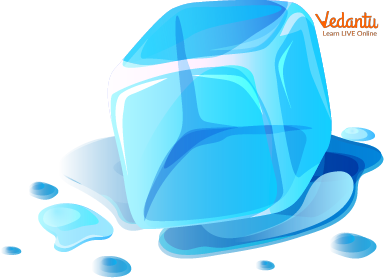




An Introduction to What is Freezing
Freezing and Melting are phase changes that occur when the states of a solid or liquid change. Freezing is the scientific process by which a liquid transforms into a solid due to decreased energy in its particles. This is frequently caused by cooling. The freezing point is the temperature at which a liquid solidifies.
Freezing is one of the oldest and most commonly used ways of food preservation which allows for the best preservation of taste, texture, and nutritional content in foods. In this article, melting point, freezing point, and the difference between them will be discussed.

Melting and Freezing
What is Freezing?
In chemistry, freezing is the scientific process through which a liquid transforms into a solid due to decreased energy in its particles. This is frequently caused by cooling. In most cases, this is the same as the melting point. Freezing is a reversible change, which means that once frozen is done then it can be returned to its original liquid condition.
Freezing is one of the oldest and most commonly used ways of food preservation which allows for the best preservation of taste, texture, and nutritional content in foods. Freezing prevents harmful microorganisms from developing on food that might otherwise grow at room temperature. As a result, suitable items can be safely consumed months after their original expiry date.
Example of Freezing
Lava freezing into rock magma is a molten rock combination that exists under the Earth's surface. Lava is the material taken from a volcano when it is discharged. Magma has a temperature range of 700-1300 °C which makes it very hot. Due to this, high-temperature lava transforms into a liquid. As a result, the lava cools and forms into the rocks.
What is Melting?
In Science, melting is the conversion of a solid into a liquid when the temperature rises. The melting point is the temperature at which a solid substance liquefies. Melting happens when the internal energy of a solid rises. The major reasons for melting food in terms of food production and preparation include chocolate moulding, the manufacturing of processed cheese, the processing of oils and fats, and the recovery of animal fat from meat wastes.

Melting of Ice
Example of Melting
Light bulbs are an excellent example of how melting is used in our daily life. The filament of light bulbs is made of tungsten metal. The metal in the bulb filaments must be heated to extremely high temperatures to create light. The tungsten metal has the greatest melting point as compared to other metals. It is used in light bulbs. Glassmaking is another common application for melting. In glass melting furnaces, raw materials are melted at temperatures ranging from 1500°C to 1700°C.
Differences between Melting and Freezing Points
Melting and Freezing Point of Water
The freezing point represents the liquid-to-solid transformation, whereas the melting point is the temperature at which water changes from a solid (ice) to liquid water. Water has a freezing and melting point of 0 °C or 32 °F. The temperature may be less if supercooling occurs. Water may stay a liquid as cold as -40 to -42°F under certain conditions.
Summary
In this article, we studied melting and freezing points. Freezing is the scientific process through which a liquid transforms into a solid due to decreased energy in its particles. Freezing is one of the oldest and most commonly used ways of food preservation and melting is the conversion of a solid into a liquid when the temperature rises. The major reasons for melting food in terms of food production and preparation include chocolate moulding and the manufacturing of processed cheese.
FAQs on What is Freezing? Knowing the Difference between Freezing and Melting
1. Why does glass melt across a wide temperature range but ice has a sharp melting point?
Crystalline solids only melt within a small temperature range, but amorphous materials melt throughout a large range of temperatures. Ice is a crystalline solid because it has a sharp melting point, whereas glass is an amorphous solid and melts across a wide temperature range. Crystalline solids are described as having highly organised arrangements of their atoms, ions, and molecules in tiny structures. Amorphous solids are those that lack the general organisation of a crystal lattice or in which the particles are not organised in any particular order.
2. Describe the methodology used to determine melting points.
There are several techniques to calculate the melting point, each of which corresponds to a different amount of solid fat remaining. The capillary tube melting point, also known as the complete melting point or clear point, is the temperature at which fat is heated at a given rate until it becomes totally clear and liquid in a one-end closed capillary tube. Similar to the capillary tube approach, the slip melting point is determined by the temperature at which a column of heated fat moves in an open capillary.
3. Why does ice melt at a lower temperature than water?
In ice, three H2O molecules form a hexagonal honeycomb pattern around each H2O molecule. Each molecule in water is surrounded by four random neighbours, creating the appearance of an open prison. As a result, there are numerous openings or holes.
In this structure, fewer molecules are packed per millilitre. When ice melts, a large number of hydrogen bonds are broken. The molecules subsequently move into the cracks or empty spaces.









